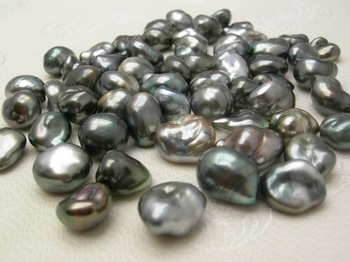
The Swiss Gemmological Insititute SSEF has received large quantities of saltwater pearls for certification in recent weeks. SSEF director Dr. Michael S. Krzemnicki said these pearls are generally characterised by an almost perfect appearance and are often accompanied by reports describing them as natural pearls. However, their appearance has raised doubt amongst many natural pearl dealers.
The pearls were tested with the most advanced forms of technology, including X-ray radiography, X-ray luminescence, X-ray micro tomography and radiocarbon age dating, and many were actually identified as beadless cultured pearls. Although they do not show one distinct feature that explicitly characterises them as cultured, it is a combination of internal and external structures which enable conclusive indentification of this material.
The arrival of large quantities of these new saltwater pearls, whose quality is far better than that of many natural pearls, represents a great danger to the natural pearl market. Following the sudden increase of this material on the market, the SSEF has taken a number of measures to protect the natural pearl trade. The SSEF has adapted its pearl certification policy and is collaboratively promoting transparent standards at an international level.
An important step is the use of more rigorous and specified definitions for natural and cultured pearls.
A natural pearl is a pearl which formed in a wild oyster (mussel) and is living in its natural habitat. It formed without any human intervention. Any pearl stemming from a pearl cultivation farm is a cultured pearl.
Photo courtesy of IDEX Online News.
No comments:
Post a Comment